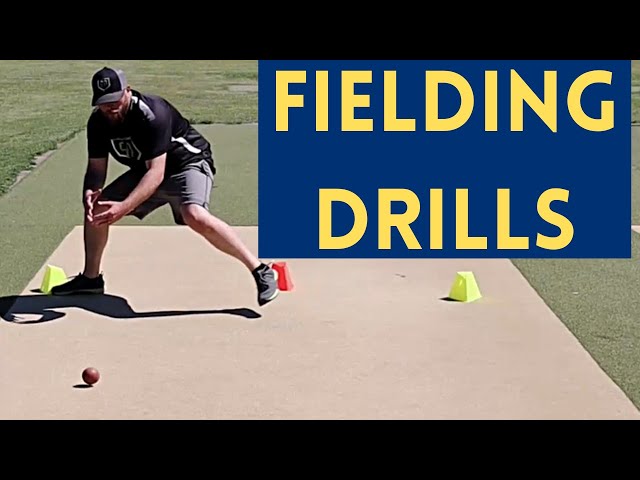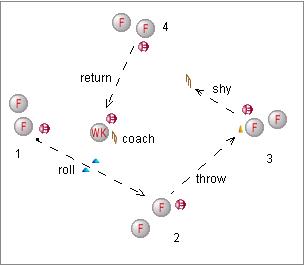Introduction
Welcome to our cricket fielding technique improvement guide. Fielding is an integral part of cricket, and a strong fielding team can often make the difference between winning and losing matches. Whether you’re a seasoned player looking to refine your skills or a beginner eager to learn the basics, this article will provide you with valuable insights, tips, and exercises to help you become a better fielder. We’ll explore the importance of fielding, key fundamentals, effective drills, strategic considerations, and common mistakes to avoid. Let’s dive in and enhance your
The Importance of Fielding in Cricket
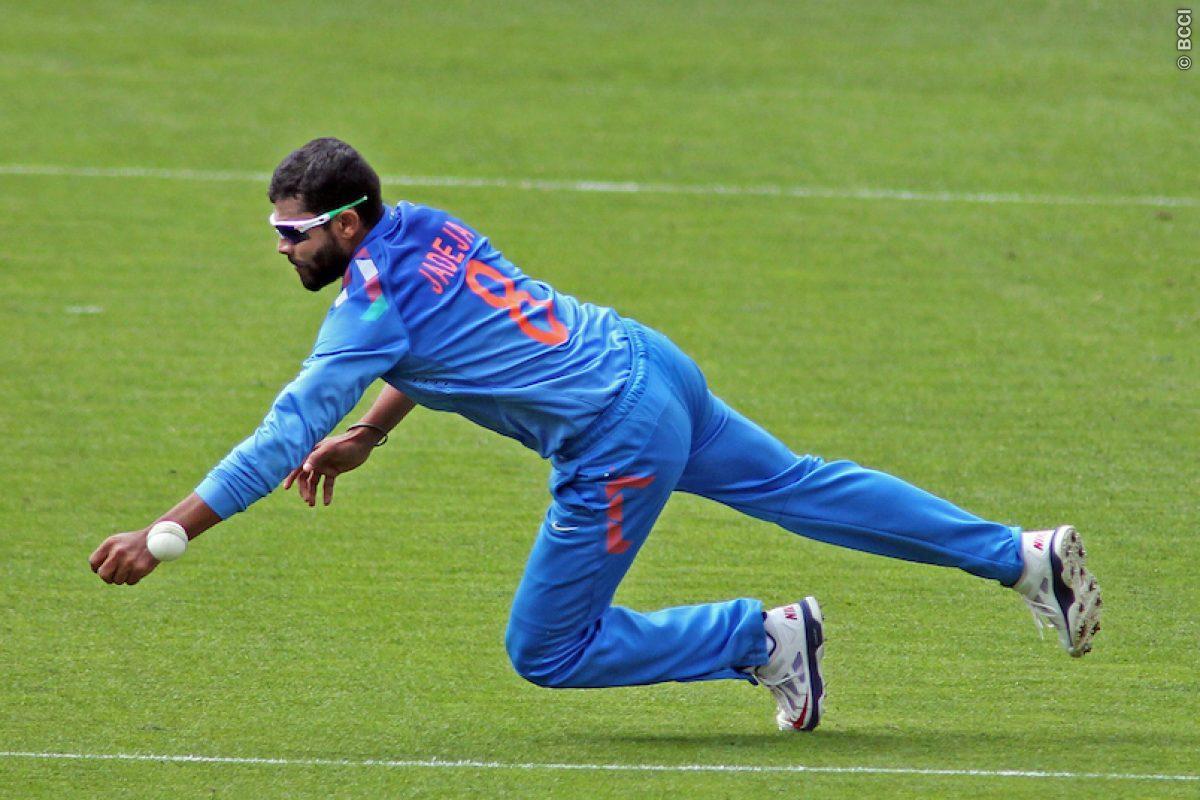
Fielding is a crucial aspect of cricket that often receives less attention compared to batting or bowling, but its significance cannot be overstated. A strong fielding team can change the course of a match, making it a vital component of a winning strategy. Here’s why fielding plays a pivotal role in the game of
- Runs Saved: Effective fielding can save valuable runs for your team. Diving stops, quick throws, and precise catches can prevent the opposition from accumulating extra runs, which can be decisive in limited-overs formats.
- Wicket-Taking Opportunities: Fielding often leads to wickets. A sharp catch or a direct hit run-out can break crucial partnerships and put the batting side on the back foot.
- Pressure on Batsmen: Accurate throws and agile fielding put pressure on batsmen. When they know that the fielders are quick and sharp, they are less likely to take risky runs and may make mistakes in the process.
- Momentum Shifter: A brilliant fielding effort can shift the momentum of a game. A spectacular catch or a run-out can lift the spirits of your team and demoralize the opposition.
- Support for Bowlers: Good fielding supports your bowlers. When bowlers see their teammates backing them up in the field, they are more motivated to bowl with discipline and aggression.
Fielding is not just about stopping boundaries and taking catches; it’s about creating a well-oiled defensive unit that complements your team’s overall strategy. A strong fielding side can put the opposition under constant pressure and force them to take risks, resulting in wickets and lower run rates.
Moreover, in formats like T20 cricket, where runs are scored quickly, fielding becomes even more critical. Every run saved becomes precious, and the fielding side’s agility and accuracy can make the difference between winning and losing.
Fielding Statistics
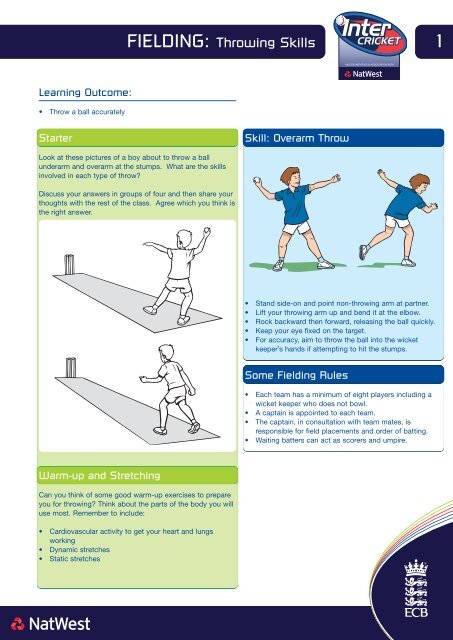
Fielding prowess is often quantified through various statistics, which highlight the impact of fielding on the game. Some key fielding statistics include:
| Stat | Description |
|---|---|
| Catches Taken: | The total number of catches held by a fielding team in a match or series. |
| Run-Outs: | The number of times fielders successfully run out batsmen by hitting the stumps directly or indirectly. |
| Fielding Percentage: | The ratio of successful fielding actions (stops, throws, catches) to total opportunities. A higher percentage indicates better fielding. |
These statistics not only reflect the fielding team’s performance but also influence team selection and strategies. Coaches and captains often analyze these numbers to improve their fielding units.
In conclusion, fielding is a cornerstone of success in cricket. It’s not just a supporting act but a game-changing skill that can turn matches in your favor. As we delve deeper into this guide, we’ll explore the fundamentals of effective fielding and provide you with drills and tips to enhance your fielding abilities.
Key Fielding Fundamentals
Mastering the fundamentals of fielding is essential for becoming a reliable and agile fielder. These core principles form the foundation of successful fielding in cricket:
- Proper Body Positioning: Fielding starts with positioning. Fielders must be in the right place at the right time to make plays. Stand with knees slightly bent, weight on the balls of your feet, and be ready to react swiftly.
- Quick Reflexes and Reaction Time: Fielding often involves lightning-fast reactions. Practice drills that enhance your reflexes, such as slip catching or close-in fielding, to be prepared for split-second decisions.
- Effective Communication: Communication is key in the field. Fielders need to call loudly and clearly to avoid collisions and ensure that everyone knows their responsibilities. Simple shouts like “mine” or “yours” can make a significant difference.
Let’s dive deeper into each of these fundamental aspects:
1. Proper Body Positioning
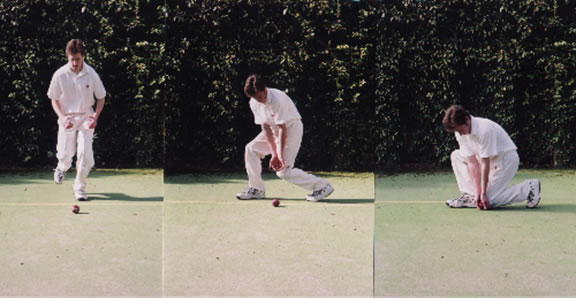
Your body positioning is crucial to cover the field effectively. Whether you’re stationed in the slips, on the boundary, or close to the batsman, remember these key points:
- Stay on Your Toes: Keep your weight on the balls of your feet, ready to move in any direction.
- Bent Knees: Slightly bend your knees to maintain a low center of gravity, making it easier to dive or change direction quickly.
- Hands Ready: Keep your hands up and ready to react. Being prepared to catch or field the ball is essential.
- Eyes on the Ball: Always keep your eyes on the ball, even when it’s in the bowler’s hand. This helps you anticipate the ball’s trajectory and react faster.
2. Quick Reflexes and Reaction Time

Fielding often comes down to quick reactions. To sharpen your reflexes and reaction time, consider these training methods:
- Slip Catching: Slip fielding requires lightning-fast reflexes. Practice catching balls with a slip fielder’s cordon to improve your close-catching skills.
- Reaction Drills: Set up drills that involve sudden changes in direction or quick movements. For example, have a coach or teammate hit balls randomly, and you must react swiftly to field them.
3. Effective Communication
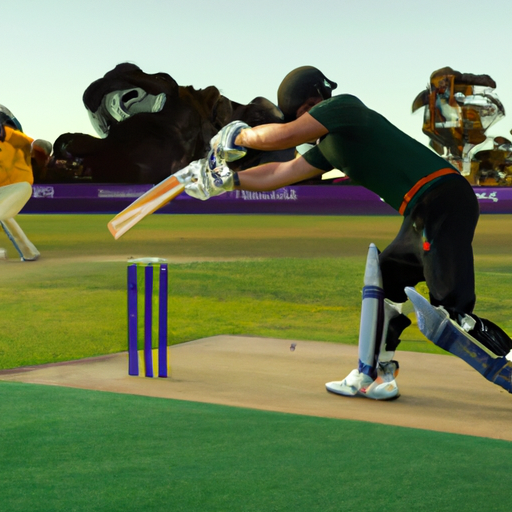
Clear and effective communication can prevent misunderstandings and ensure that fielders work cohesively. Here are some communication tips:
- Be Vocal: Don’t hesitate to shout loudly and clearly when you are fielding the ball. Use simple calls like “mine” or “yours” to avoid confusion.
- Plan Field Placements: Before the match, discuss field placements with your captain and teammates. Know where each fielder is positioned for different bowlers and batsmen.
- Non-Verbal Signals: Use hand signals or gestures to communicate silently with your teammates, especially in noisy or crowded situations.
By focusing on these key fielding fundamentals, you can become a more dependable and agile fielder, making a significant impact on your team’s performance.
2.1. Proper Body Positioning
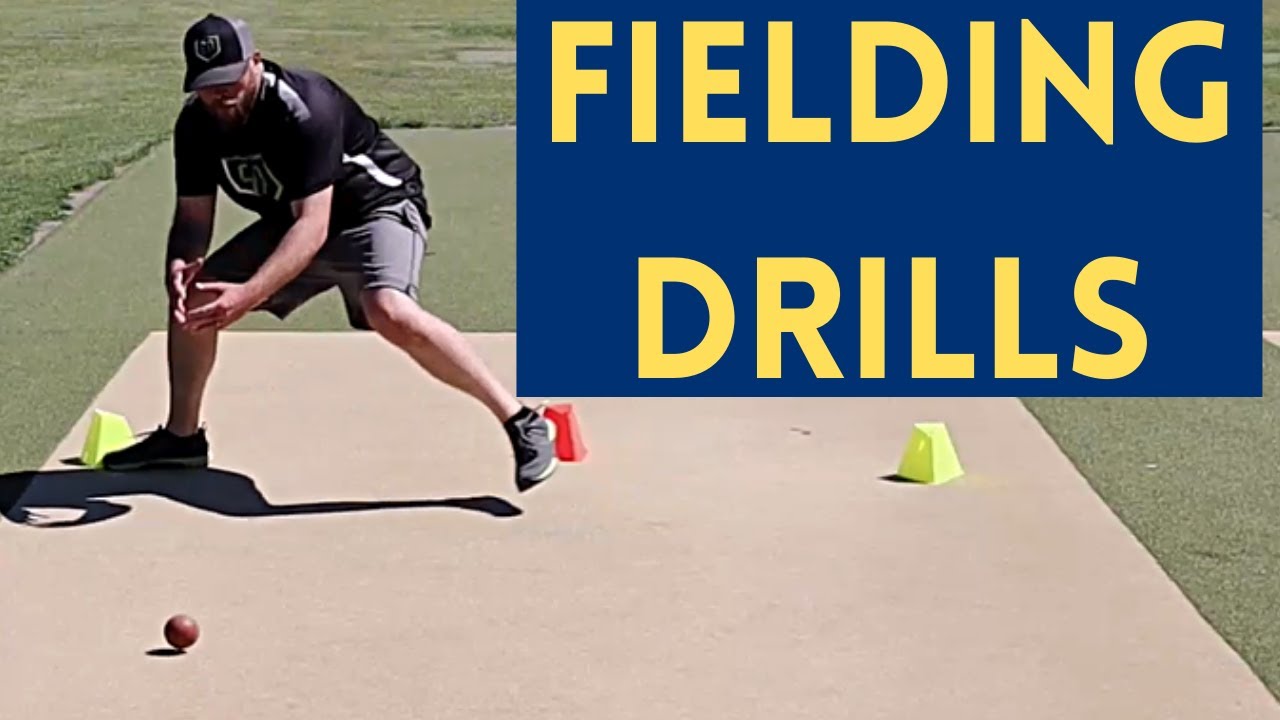
Proper body positioning is the foundation of effective fielding in cricket. It allows you to cover ground swiftly, react to the ball, and execute plays with precision. Here are the key aspects of proper body positioning:
- Stay on Your Toes: To be agile and responsive, keep your weight on the balls of your feet. This allows you to move in any direction quickly. Being flat-footed can slow you down and hinder your ability to change direction swiftly.
- Bent Knees: Maintain a slight bend in your knees. This posture helps you maintain a low center of gravity, making it easier to dive, change direction, and stay balanced. A lower center of gravity also aids in maintaining stability while attempting ground balls or catches near the boundary.
- Hands Ready: Always keep your hands up and ready for action. Your hands should be in a relaxed but alert position, prepared to catch the ball or field it cleanly. Keeping your hands low or tucked away can result in missed opportunities.
- Eyes on the Ball: Maintain a laser-like focus on the cricket ball. This means watching the ball from the moment it leaves the bowler’s hand, during its flight, and as it approaches you. Tracking the ball closely allows you to anticipate its trajectory and react more quickly.
Proper body positioning is not a one-size-fits-all concept. It can vary depending on your fielding position. For example:
Infield Fielding:
In the infield, where you’re likely to field ground balls, your body positioning should be low and ready. Your knees should be bent, and your hands should be close to the ground, making it easier to scoop up the ball quickly. Being quick off the mark is crucial in this position.
Outfield Fielding:
In the outfield, where you’re often fielding high catches or preventing boundary hits, your positioning may be more upright. However, you should still be on your toes with a slight knee bend. Your hands should be at chest level, ready to reach up for catches or dive to make stops near the boundary.
Remember that consistent practice is the key to ingraining proper body positioning into your fielding technique. Drills that simulate match situations, such as diving to stop boundary shots or taking catches at slip, can help you become more comfortable and confident in your fielding stance.
Incorporating these principles of proper body positioning into your fielding will not only make you a more effective fielder but also reduce the risk of injury by ensuring that you move with agility and maintain stability during fielding efforts.
2.2. Quick Reflexes and Reaction Time
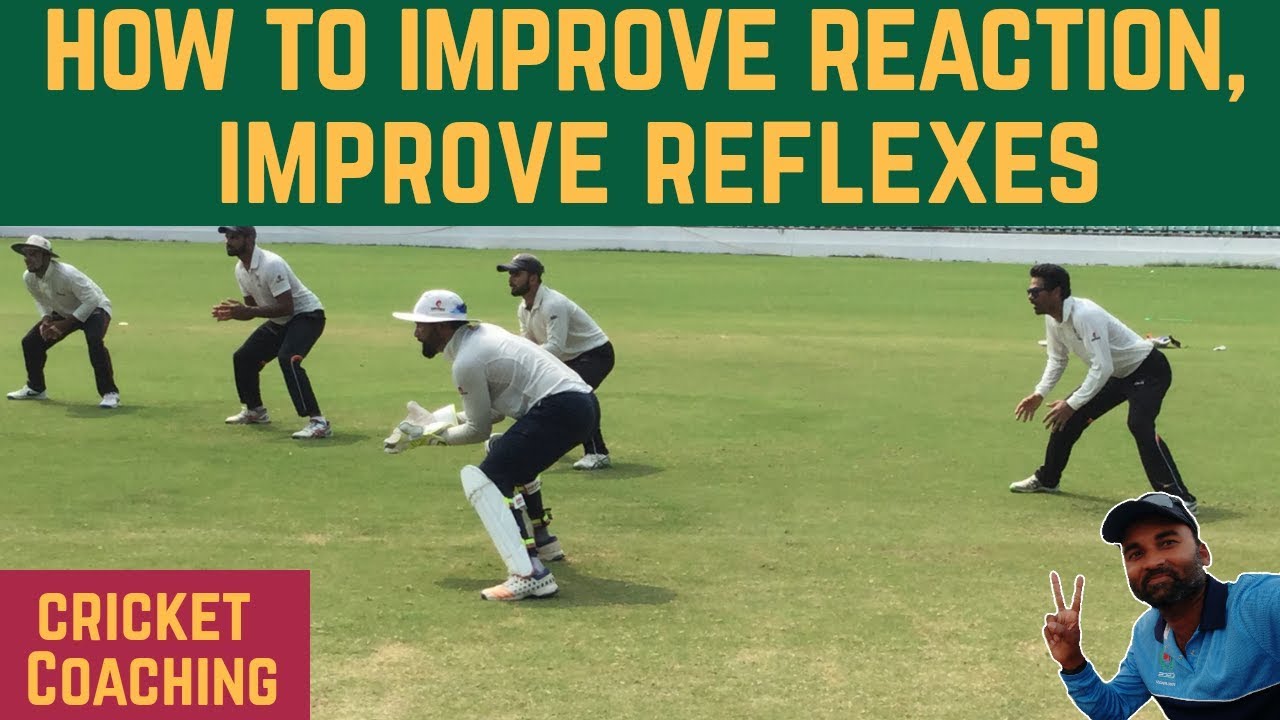
In cricket fielding, quick reflexes and rapid reaction time are indispensable. Being able to react swiftly to the ball can mean the difference between a successful fielding effort and a missed opportunity. Here’s how you can improve your reflexes and reaction time:
1. Slip Catching Drills:
Slip catching drills are an excellent way to hone your reflexes. Practice with a partner who hits balls randomly in your direction. Focus on reacting quickly to catch balls that come your way. Gradually increase the difficulty by varying the direction, speed, and height of the deliveries.
2. Close-In Fielding:
Close-in fielding drills involve standing close to the batsman to field balls that are played off the bat. This not only improves your reflexes but also enhances your ability to anticipate the ball’s trajectory. It’s a valuable skill for positions like slips or silly point.
3. Reaction Time Training:
Set up drills that challenge your reaction time. For instance, have a coach or teammate hit balls in random directions, and you must react swiftly to move to the ball and field it cleanly. Use cones or markers to create unpredictable ball paths.
4. Hand-Eye Coordination Exercises:
Improving hand-eye coordination is key to faster reactions. Engage in activities like tennis ball catching or reaction ball training. These exercises help synchronize your visual perception with your hand movements, allowing you to react more rapidly to incoming balls.
5. Visual Focus:
Maintaining a sharp visual focus on the ball is essential. Train your eyes to track the ball from the bowler’s hand until it reaches you. Avoid distractions and keep your concentration solely on the ball. Practice this skill consistently to enhance your reaction time.
Quick reflexes and reaction time are especially critical in positions like wicket-keeping, slips, and close-in fielding. However, every fielder can benefit from these skills as they contribute to overall agility and the ability to save runs or take wickets through sharp catches or run-outs.
The Role of Mental Preparedness
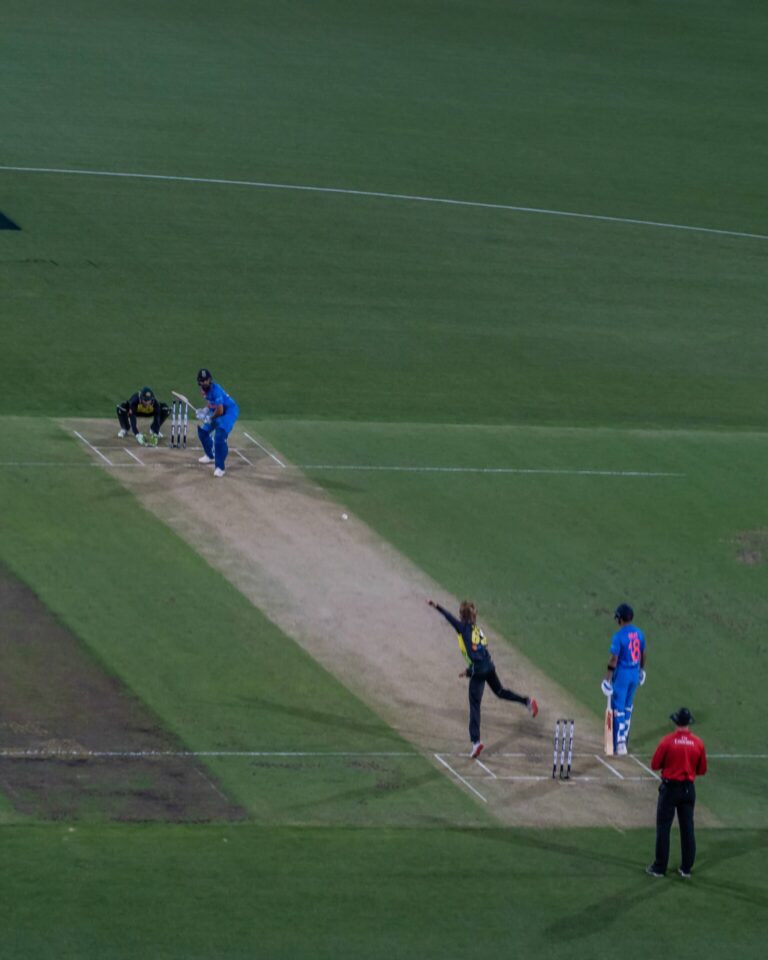
Aside from physical training, mental preparedness plays a significant role in improving your reflexes and reaction time. Stay mentally alert, anticipate the ball’s movement, and visualize successful fielding scenarios. By combining mental focus with physical training, you can become a fielder who consistently turns half-chances into successful plays.
Remember that refining your reflexes and reaction time is an ongoing process. Regular practice and a commitment to improvement will lead to noticeable progress in your fielding abilities.
2.3. Effective Communication
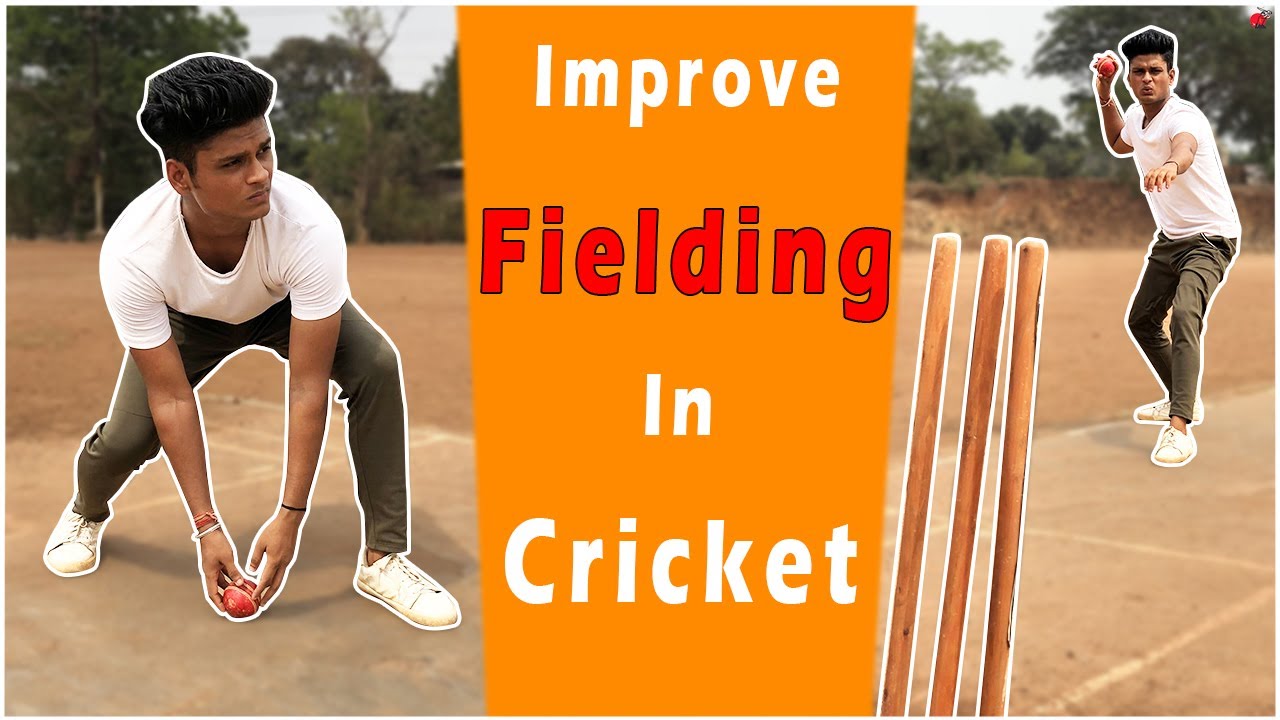
Effective communication is the cornerstone of successful fielding in cricket. It ensures that fielders work in harmony, minimizes confusion, and maximizes the chances of making crucial plays. Here’s how you can improve your communication skills as a fielder:
1. Vocal Communication:
Using your voice is essential in the field. Loud and clear communication helps fielders identify their roles quickly. Use simple, concise calls such as “mine,” “yours,” or “wait” to avoid misunderstandings.
2. Pre-Game Planning:
Before the match, discuss field placements and strategies with your captain and teammates. Ensure that everyone understands their positions for different bowlers and batsmen. Having a clear plan in place minimizes confusion during the game.
3. Non-Verbal Signals:
In noisy or crowded situations, non-verbal signals can be invaluable. Develop hand signals or gestures to communicate silently with your teammates. For example, tapping your head could mean “run out” or pointing towards the wicket could signal a throw to the wicketkeeper.
4. Back-Up Fielding:
Always be ready to back up throws and fielding attempts. Even if you’re not directly involved in the play, your presence can prevent overthrows and extra runs. Stay attentive and be prepared to intercept the ball if it gets past the primary fielder.
5. Maintain a Positive Attitude:
Positive communication can boost team morale and confidence. Encourage your teammates with words of support, especially during challenging phases of the game. A positive atmosphere can lead to better teamwork and improved fielding performance.
6. Coordinate Fielding Positions:
Fielders should coordinate their positions based on the batsman’s strengths and the bowler’s line and length. Be willing to adjust your position based on the situation and the strategies discussed with your captain.
The Impact of Effective Communication
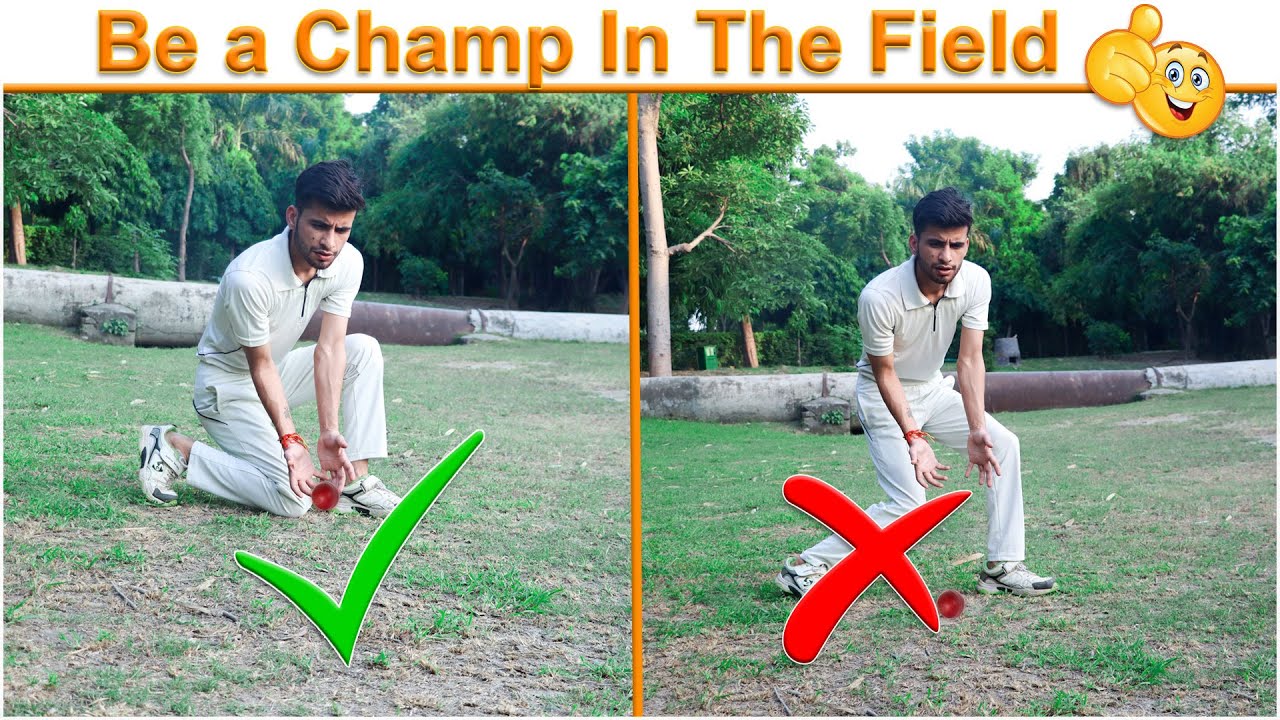
Effective communication on the field has several advantages:
- Prevents Collisions: Clear communication helps fielders avoid collisions while attempting catches or running between wickets.
- Quick Decision-Making: When everyone knows their roles, decisions are made faster, and fielding actions become more efficient.
- Enhances Fielding Strategy: Communication allows for on-the-fly adjustments to field placements and strategies based on the batsman’s behavior.
- Minimizes Errors: Misfields and overthrows are reduced when fielders communicate effectively and back up each other.
Ultimately, effective communication not only improves fielding but also contributes to a cohesive and successful team performance. It fosters trust among teammates and ensures that everyone is working towards a common goal—winning the match through exceptional fielding and teamwork.
Practice and consistency are key to developing your communication skills as a fielder. Keep honing your ability to convey and receive information swiftly and accurately, and you’ll be a valuable asset to your team.
3. Drills and Exercises for Fielding
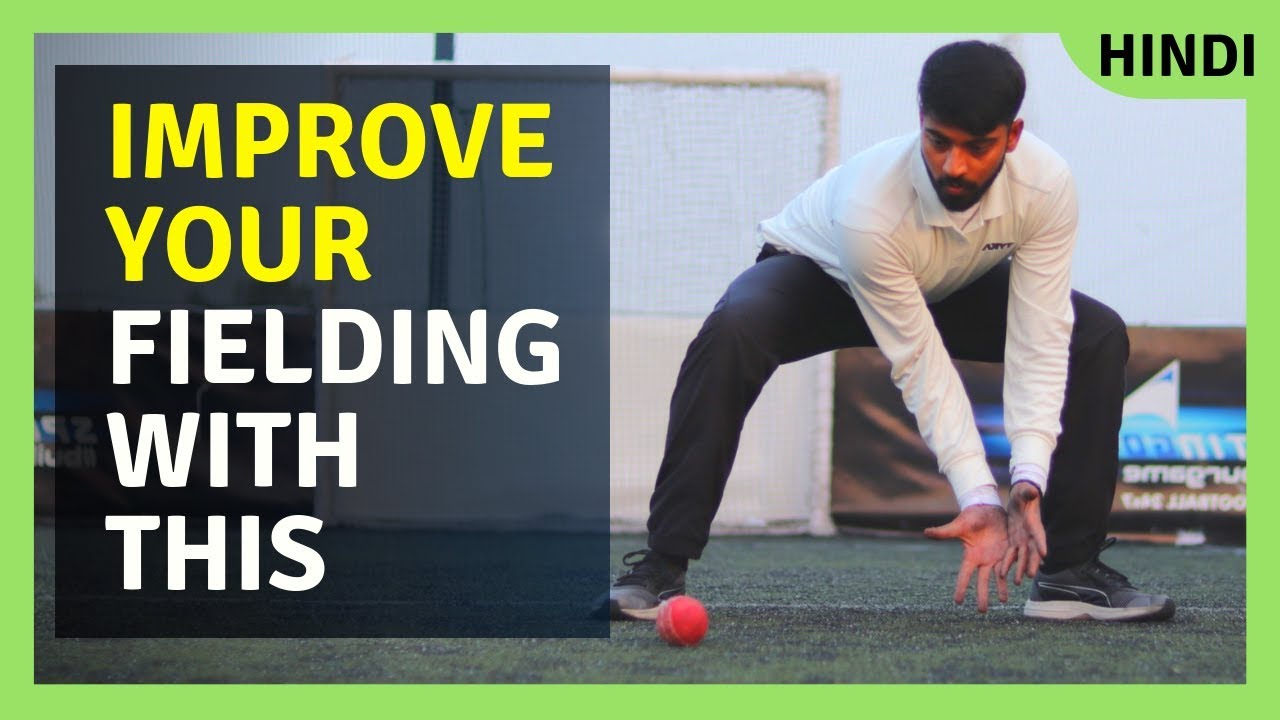
To become a proficient fielder in cricket, regular practice is essential. Specific drills and exercises can help you refine your skills, improve agility, and enhance your overall fielding capabilities. Here are some effective drills and exercises to incorporate into your training regimen:
1. Catching Practice:
Catching practice is fundamental to fielding proficiency. Focus on various types of catches, including high catches, low catches, and diving catches. You can use a partner or a cricket catching machine to simulate different scenarios. Gradually increase the difficulty by varying the speed and trajectory of the throws.
2. Ground Fielding Drills:
Ground fielding is crucial for preventing runs and affecting run-outs. Use cones or markers to create a grid, and practice fielding ground balls within this area. Work on quick pickups and accurate throws to the stumps. Vary the direction and speed of the balls to challenge yourself.
3. Throwing Accuracy Training:
Accurate throws are essential for run-outs and preventing batsmen from taking extra runs. Set up targets such as stumps or markers and practice hitting them consistently from different distances and angles. Focus on both overarm and underarm throws to improve versatility.
4. Reaction Time Drills:
Enhancing your reaction time is critical for close-in fielding positions and slip catching. Use reaction balls or have a partner hit balls randomly in your direction. React swiftly to make the play, whether it’s a catch, stop, or throw to the wickets.
5. Slip Catching Practice:
Slip fielding requires specific skills due to the fast pace of the game. Practice slip catches regularly to improve your ability to grab catches in the slip cordon. Focus on hand-eye coordination, positioning, and quick reactions.
6. High Catching Drills:
High catches can turn the game in your favor, especially in limited-overs cricket. Practice taking catches above head height by having a partner or coach launch balls high into the air. Work on positioning, timing, and safe hands.
7. Cone Running and Agility Exercises:
Enhancing your agility is essential for quick movement on the field. Set up a series of cones in a zigzag pattern and practice running through them with quick changes in direction. This helps improve your footwork and agility, which are vital for fielding close to the batsman.
8. Fitness Training:
Overall fitness is crucial for fielding endurance and agility. Incorporate cardio workouts, strength training, and flexibility exercises into your routine. A fitter fielder can cover more ground and maintain peak performance throughout the match.
Tracking Your Progress
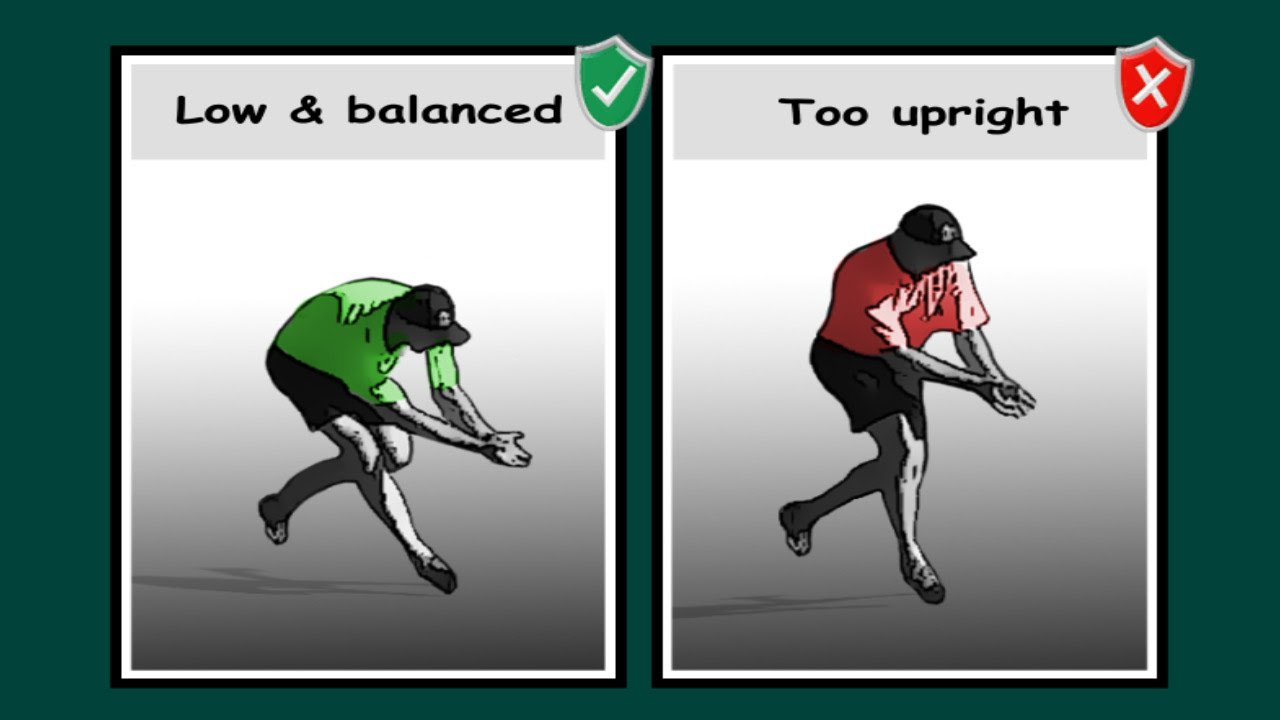
It’s important to track your progress as you work on your fielding skills. Keep a record of the number of catches taken, run-outs effected, and successful throws to the stumps in practice sessions. This helps you identify areas that need improvement and measure your development over time.
Consistent practice, dedication, and a commitment to refining your fielding technique through these drills and exercises will make you a more reliable and impactful fielder on the cricket field.
3.1. Catching Practice
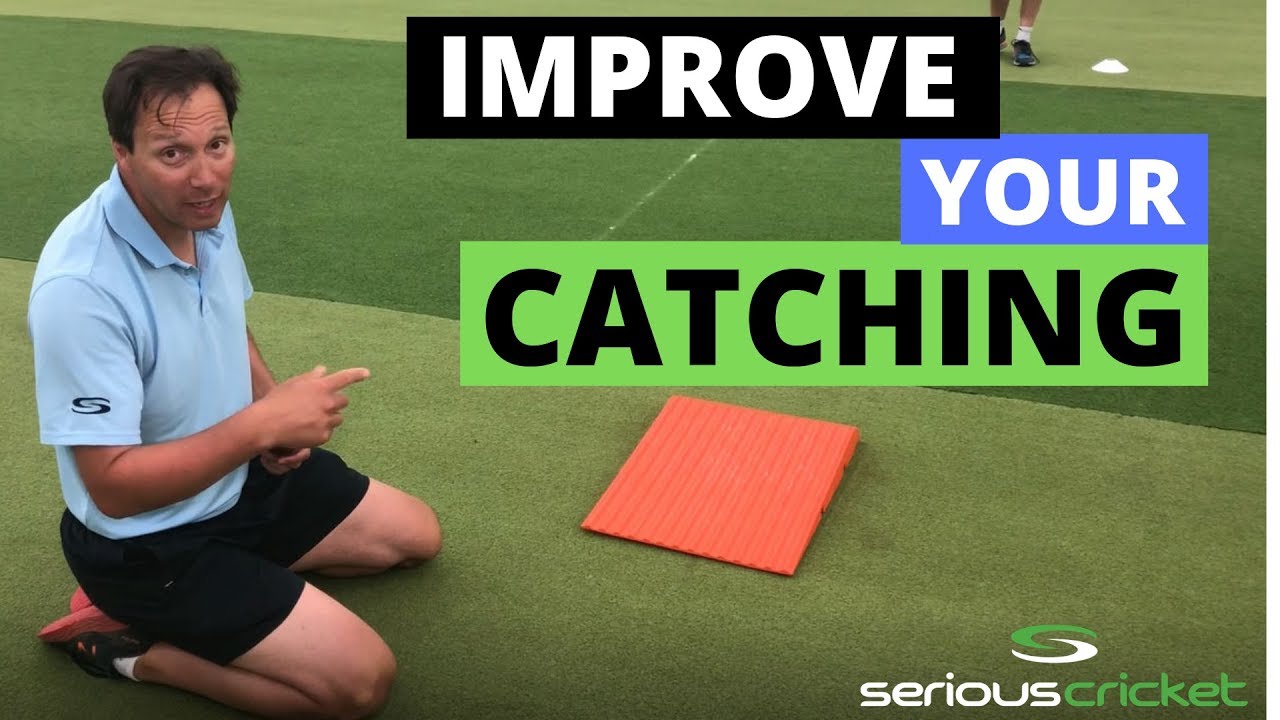
Catching practice is the backbone of fielding in cricket. A fielder’s ability to take catches can turn the tide of a match. To become a reliable catcher, it’s essential to focus on various types of catches and develop safe and consistent techniques. Here’s a comprehensive guide to catching practice:
The Importance of Catching:
Catching is a game-changing skill. A well-taken catch not only dismisses the batsman but also lifts the spirits of your team and puts pressure on the opposition. In limited-overs formats, where run-scoring is brisk, catching becomes even more critical as every wicket is precious.
Types of Catches:
Catching practice should encompass different types of catches:
- High Catches: These are catches taken above head height, often near the boundary. High catches require good hand-eye coordination and the ability to judge the ball’s trajectory accurately.
- Low Catches: Low catches are taken near the ground. Fielders need quick reflexes and safe hands for these catches.
- Diving Catches: Diving catches involve full-body extensions to reach balls that are just out of reach. These catches require courage, athleticism, and the ability to control the ball while airborne.
Catching Drills:
Here are some essential catching drills to include in your practice sessions:
- Catch and Release: Stand at a comfortable distance from your partner. They should gently throw the ball in various directions. Focus on catching and releasing the ball quickly, emphasizing clean and safe catches.
- Backward and Forward Dives: Practice diving catches by having a partner throw balls in front and behind you. Mastering the forward and backward dive is crucial for boundary fielding.
- Slip Catching: Set up in a slip position and have a partner throw balls at varying speeds and angles. Slip catching is an art, and practicing it regularly can make you a specialist in that position.
- High Catching: Use a catching machine or a partner to launch high catches. Work on your positioning under the ball, timing your jump, and securing the catch with both hands.
Catching Technique:
A solid catching technique is essential. Focus on the following key elements:
- Watch the Ball: Keep your eyes on the ball from the moment it leaves the bowler’s hand until it reaches your hands. This helps you judge the trajectory and timing accurately.
- Soft Hands: When catching, avoid stiff hands. Keep your hands relaxed and cushion the ball upon impact to prevent it from popping out.
- Positioning: Ensure you’re in the right position to take the catch. Move your feet quickly to get under the ball, and use your body to stabilize yourself.
- Balance: Maintain balance while taking the catch. Avoid overreaching or leaning too far in any direction, as it can lead to mistakes.
Remember that practice makes perfect. Consistent catching practice, combined with mastering different types of catches and developing a reliable catching technique, will transform you into a fielder your team can rely on to make crucial breakthroughs in matches.
3.2. Ground Fielding Drills
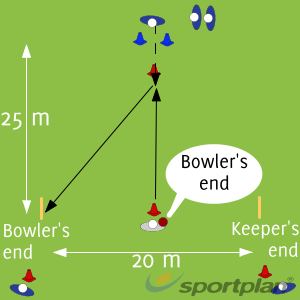
Ground fielding is an integral aspect of cricket fielding, especially in limited-overs formats where saving runs is paramount. Developing sharp ground fielding skills can make a significant difference in matches. Here are some effective ground fielding drills to hone your abilities:
The Importance of Ground Fielding:
Ground fielding involves stopping balls along the ground, preventing boundaries, and executing quick throws to the wickets. It’s not just about individual skill but also contributes to the overall efficiency of the fielding unit. Good ground fielding can build pressure on batsmen and lead to run-out opportunities.
Essential Ground Fielding Drills:
- The Cone Grid: Set up a grid of cones or markers on the field to simulate different fielding positions. Practice fielding ground balls within this grid, focusing on quick pickups and accurate throws to designated targets.
- Reaction Drills: Have a coach or partner hit balls in various directions within your fielding area. React swiftly to move to the ball, field it cleanly, and return it accurately. These drills improve your agility and decision-making under pressure.
- Throwing Accuracy: Place a target, such as a set of stumps or a marker, and work on hitting it consistently with your throws from various distances. Precise throws are crucial for run-outs and preventing batsmen from taking extra runs.
- Footwork and Positioning: Practice moving quickly to cut off angles and prevent runs. Work on positioning yourself to intercept the ball before it reaches the boundary.
Specialized Ground Fielding Drills:
Depending on your fielding position, you can also incorporate specialized ground fielding drills:
- Close-In Fielding: If you field in close positions, practice fielding balls played off the bat. React quickly to take catches or make stops near the batsman.
- Boundary Fielding: If you’re positioned near the boundary, focus on preventing boundary shots. Work on your anticipation and timing to make boundary-saving stops or take high catches near the rope.
- Slip Catching Practice: Slip fielding requires its own set of drills. Practice taking catches from various angles, including low catches that come quickly to the slip cordon.
Key Ground Fielding Techniques:
Regardless of your fielding position, some key techniques should be emphasized:
- Low Body Position: Maintain a low body position with knees slightly bent to facilitate quick pickups.
- Quick Release: Work on releasing the ball quickly and accurately after fielding it to facilitate run-outs or relay throws.
- Two-Handed Pickups: Whenever possible, use a two-handed technique to ensure a clean pickup and prevent fumbling.
- Stay on Your Toes: Keep your weight on the balls of your feet to remain agile and ready to move in any direction.
Ground fielding is an area where practice pays off significantly. Consistent drills and focused training on specific skills related to your fielding position will make you a valuable asset to your team, helping to save crucial runs and create wicket-taking opportunities.
3.3. Throwing Accuracy Training
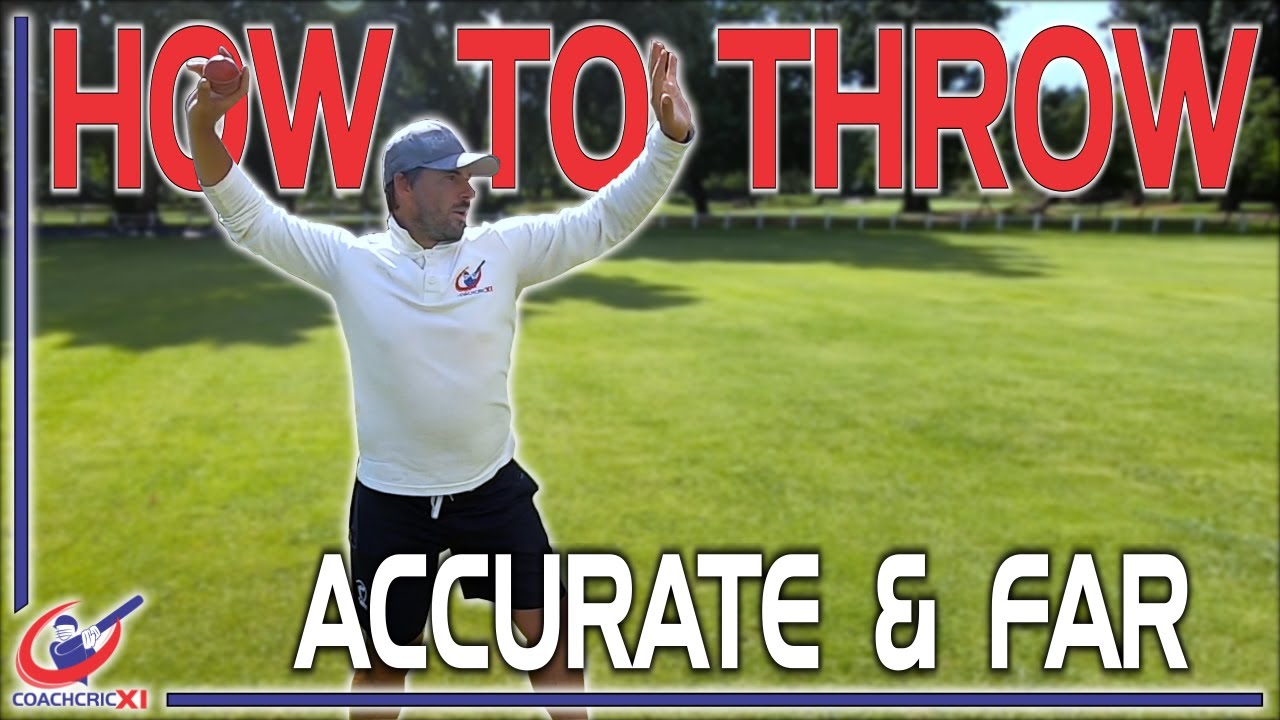
Accurate throwing is a crucial skill in cricket fielding, whether it’s hitting the stumps for a run-out or preventing batsmen from taking extra runs. To excel in this aspect of fielding, you need to develop precision and consistency in your throws. Here’s a comprehensive guide to throwing accuracy training:
The Significance of Throwing Accuracy:
Thowing accuracy plays a pivotal role in determining the outcome of close matches. A pinpoint throw can lead to run-outs or prevent batsmen from taking valuable runs, applying pressure on the opposition and changing the course of the game.
Throwing Accuracy Drills:
Effective throwing accuracy training involves various drills and exercises:
- Target Practice: Set up a target, such as a set of stumps or a marker, at a specific distance. Focus on hitting the target consistently with your throws. Gradually increase the distance and challenge yourself with different angles.
- Quick Release Drills: Practice quick release of the ball after fielding it. Emphasize a smooth and fast transition from fielding to throwing. This is particularly important for close-in fielding positions.
- Accuracy Under Pressure: Simulate match situations by practicing throws while moving quickly or from awkward fielding positions. This helps you develop the ability to make accurate throws even when the pressure is on.
- Relay Throws: Work on relay throws with a partner or teammates. Practice receiving a throw and making a quick, accurate relay to the stumps. This is valuable for scenarios where multiple fielders are involved in a run-out attempt.
Key Throwing Techniques:
Mastering the following key techniques is essential for throwing accuracy:
- Balance: Maintain balance while throwing to ensure accuracy. Avoid over-rotating or leaning too far in any direction.
- Follow Through: Follow through with your arm after releasing the ball to maintain accuracy. A good follow-through helps you direct the throw accurately and with power.
- Use of Non-Dominant Hand: Incorporate your non-dominant hand to stabilize the ball and maintain control during the throwing motion. This adds accuracy to your throws.
- Target Visualization: Focus on visualizing the target (stumps or marker) while preparing to throw. This mental aspect of throwing accuracy can significantly improve your results.
Progression and Consistency:
Thowing accuracy training is progressive, and consistency is key. Start with short distances and basic drills, and gradually increase the complexity and distance as your accuracy improves. Consistent practice and attention to technique will lead to significant improvements in your throwing accuracy over time.
Remember that throwing accuracy is not just about making flashy throws but also about executing the basics consistently. Your ability to hit the stumps or make accurate throws to the wicket-keeper can be game-changing moments in cricket. Dedicate time to sharpen your throwing accuracy, and you’ll be a valuable asset to your team’s fielding unit.
4. Fielding Strategies
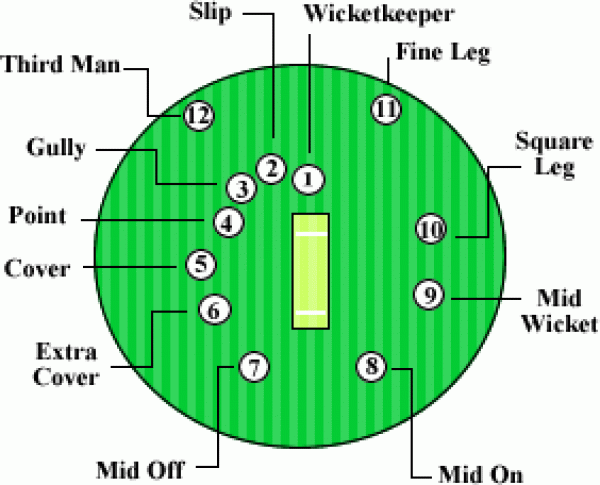
Effective fielding strategies can make a significant difference in a cricket match. A well-thought-out fielding plan not only prevents runs but also creates opportunities for wickets. Here, we’ll explore various fielding strategies that teams can employ to enhance their performance on the field:
1. Understanding the Batsman:
Understanding the strengths and weaknesses of the batsmen is crucial. Analyze their scoring patterns, preferred shots, and vulnerabilities. Fielders can be positioned strategically based on this analysis to create pressure and induce mistakes.
2. Off-Side or Leg-Side Fields:
Teams can choose to set either an off-side or leg-side field depending on the bowler’s line and the batsman’s tendencies. For instance, if a bowler is consistently bowling outside off-stump, an off-side-heavy field can limit the batsman’s scoring options.
3. Saving Singles:
Preventing batsmen from taking easy singles can build pressure. In limited-overs formats, especially, stopping singles can result in dot balls and force batsmen to take risks, potentially leading to wickets.
4. Aggressive Infield Positions:
Positioning fielders aggressively in the infield can lead to run-out opportunities. Placing fielders in catching positions, such as silly point or short leg, can also create chances for close catches off the bat.
5. Close-In Catchers:
Deploying close-in catchers in positions like slips or gully can be highly effective. These fielders are well-placed to capitalize on edges and provide support to the wicket-keeper.
6. Deep Boundary Riders:
In contrast, placing fielders on the boundary can prevent boundary shots. These fielders need to be quick on their feet to cut off boundary-bound balls and save runs.
7. Bowling Plans:
Fielding strategies should complement the team’s bowling plans. For example, if the bowler is focusing on bowling yorkers, fielders on the leg-side boundary can be positioned to cut off any flicks or leg-side shots.
8. Bowling Changes:
Fielding strategies can change with bowling changes. Different bowlers may have different strengths and weaknesses, and field placements can be adjusted accordingly to maximize their effectiveness.
9. Communication:
Effective communication is vital to implement fielding strategies successfully. Fielders should communicate constantly with each other, the bowler, and the captain to ensure everyone is on the same page regarding field placements and tactics.
10. Adaptability:
Teams must remain adaptable. Fielding strategies should be adjusted based on the flow of the game, the condition of the pitch, and the behavior of the ball. Being flexible allows teams to respond to changing circumstances effectively.
11. Pressure Building:
Building pressure through disciplined fielding and tight bowling is a key strategy. When batsmen feel the pressure to score, they are more likely to make mistakes and offer opportunities to the fielding side.
Ultimately, fielding strategies should be tailored to the specific strengths and weaknesses of both the opposition and your own team. A well-executed fielding plan can contribute significantly to match-winning performances, and it requires teamwork, coordination, and adaptability to be effective.
4.1. Infield and Outfield Positions
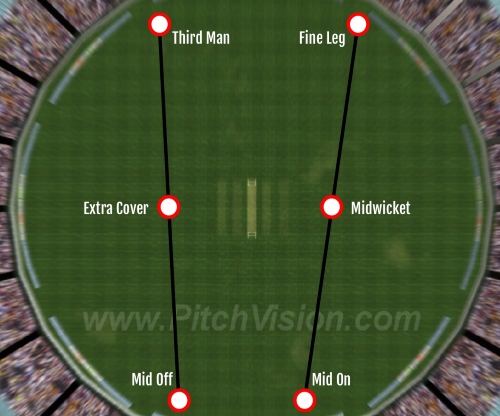
In cricket, fielders are strategically positioned both in the infield and outfield to optimize their ability to stop runs, take catches, and create wicket-taking opportunities. Understanding the roles and responsibilities of infield and outfield positions is essential for effective fielding strategies:
Infield Positions:
The infield positions are closer to the batsman and are typically within 30 yards of the batsman’s crease. Infielders play a crucial role in preventing runs and taking catches. Here are some key infield positions:
| Position | Responsibilities |
|---|---|
| Silly Point | Fielder standing very close to the batsman on the leg side. Aims to take catches off edges or deliver quick run-out throws. |
| Slip | Fielders positioned behind the batsman on the leg side. Focus on taking catches off edges, especially when the ball swings or seams. |
| Short Leg | Fielder standing close to the batsman on the leg side. Aims to catch balls that pop up off the bat or body. |
| Leg Slip | Similar to a slip position but on the leg side. Aims to catch balls that deviate off the batsman’s leg or thigh pad. |
| Short Mid-Wicket | Fielder in a catching position on the leg side. Aims to catch balls hit in the air on the leg side. |
| Forward Short Leg | Fielder placed very close to the batsman on the leg side. Primarily for catching balls that pop up off the bat or body. |
Outfield Positions:
The outfield positions are farther from the batsman, and outfielders need to cover more ground to prevent boundaries and take catches. Here are some key outfield positions:
| Position | Responsibilities |
|---|---|
| Long Off | Fielder positioned on the off side boundary. Aims to stop straight drives and take catches near the boundary. |
| Long On | Fielder on the on side boundary. Aims to stop lofted shots and take catches near the boundary. |
| Deep Cover | Fielder on the off side boundary, covering drives and cuts. Prevents boundaries and takes catches near the boundary. |
| Deep Mid-Wicket | Fielder on the leg side boundary, covering leg-side shots. Prevents boundaries and takes catches near the boundary. |
| Deep Square Leg | Fielder on the leg side boundary, positioned square of the wicket. Aims to stop pulls and sweeps and takes catches near the boundary. |
| Third Man | Fielder placed behind the wicketkeeper on the off side boundary. Stops edges and deflections and takes catches near the boundary. |
| Fine Leg | Fielder positioned behind the wicketkeeper on the leg side boundary. Prevents leg-side shots from reaching the boundary. |
Effective positioning of fielders in both the infield and outfield, along with a clear understanding of their roles, is essential for a successful fielding strategy. It maximizes the chances of taking catches, stopping runs, and creating pressure on the batting side, ultimately contributing to the team’s success in a cricket match.
4.2. Setting the Right Field Placements
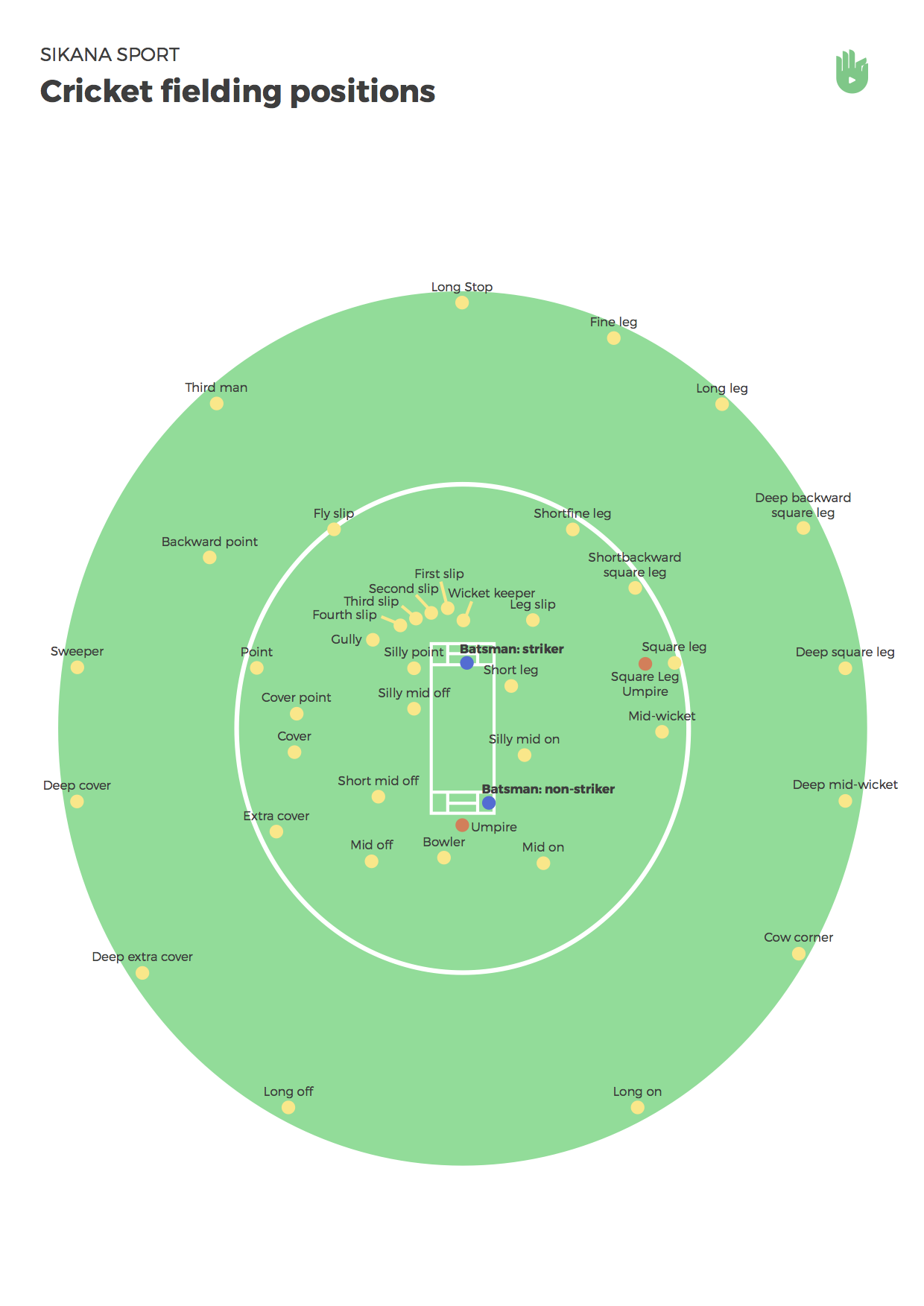
Setting the right field placements is a crucial aspect of cricket captaincy and fielding strategy. The placement of fielders can significantly impact the game by creating pressure on the batsmen, restricting runs, and creating wicket-taking opportunities. Here’s a comprehensive guide to setting the right field placements:
Understanding Field Placement:
Field placement involves positioning fielders strategically based on various factors:
- Batsman’s Style: Consider the batsman’s strengths and weaknesses. Fielders can be placed to exploit the batsman’s vulnerabilities, tempting them to play shots in areas where they are less comfortable.
- Bowler’s Line and Length: Field placements should complement the bowler’s line and length. If a bowler is consistently pitching outside off-stump, fielders can be positioned on the off side to reinforce that line.
- Match Situation: Fielding placements can vary based on the match situation. In limited-overs cricket, for example, aggressive field placements may be employed to take wickets, while in Test cricket, a more defensive setup may be used to build pressure.
- Pitch Conditions: The state of the pitch can influence field placements. On a turning track, fielders can be positioned close to the batsman to capitalize on any spin, while on a bouncy pitch, fielders may stand deeper to catch edges.
Key Field Placements:
Here are some common field placements and their strategic objectives:
| Field Placement | Strategic Objective |
|---|---|
| Slip Cordon | Positioned behind the batsman to catch edges from the bat. Effective for seam and swing bowling. |
| Gully | Covers the gap between slips and point. Aims to catch edges played square of the wicket. |
| Leg Slip | Similar to slips but on the leg side. Catches balls that deflect off the batsman’s leg or thigh pad. |
| Mid-Wicket | Placed to catch shots played on the leg side. Effective for spinners and aggressive bowling. |
| Deep Fine Leg | Placed on the boundary for fast deliveries directed at the batsman’s body. |
| Long Off | Positioned on the off side boundary to stop lofted drives. |
| Deep Cover | Covers the off side boundary to stop drives and cuts. |
| Short Leg | Stands close to the batsman to take catches off the bat or body. |
Effective Communication:
Communication is paramount when setting field placements. The captain must convey their plans to the team, and fielders should communicate with each other to ensure proper positioning and coordination.
Adaptability:
Field placements should be adaptable based on the batsman’s behavior and the effectiveness of the bowlers. Captains and fielders should be ready to make quick adjustments to exploit changing conditions.
Setting the right field placements requires a deep understanding of the game, the batsmen, and the bowlers. It’s a strategic art that can turn the tide of a match in your favor. By making informed decisions and maintaining effective communication, a team can optimize its fielding strategy and increase the chances of success on the cricket field.
5. Common Fielding Mistakes to Avoid
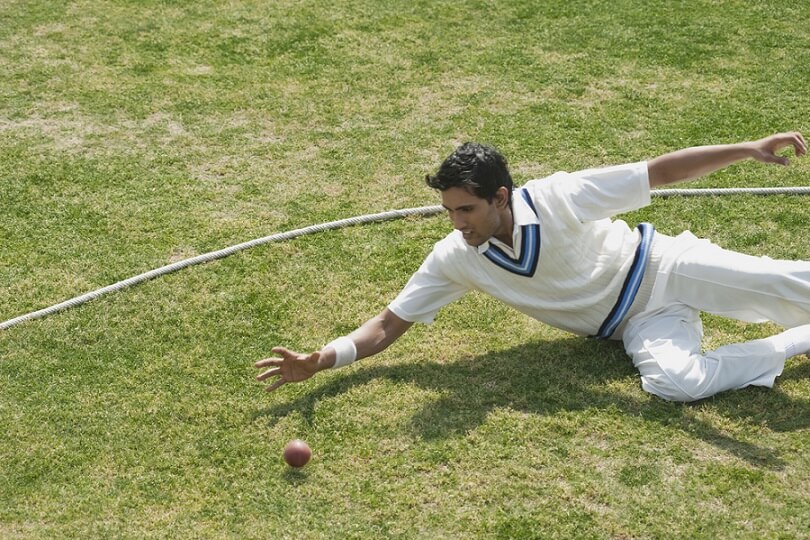
Fielding is an essential aspect of cricket, and avoiding common fielding mistakes is crucial for success on the field. Whether you’re a seasoned cricketer or a beginner, recognizing and rectifying these errors can significantly enhance your fielding performance. Here are some common fielding mistakes to avoid:
1. Poor Footwork:
Footwork is the foundation of good fielding. Failing to move quickly to the ball or being flat-footed can result in missed opportunities to stop boundaries or take catches. Practice agility and ensure your feet are always in a ready position.
2. Lack of Focus:
Concentration is key in fielding. Taking your eyes off the ball, even for a moment, can lead to fumbles and missed catches. Stay focused on the ball at all times, from the bowler’s hand to your own hands.
3. Incorrect Catching Technique:
Using incorrect catching technique can result in dropped catches. Always use two hands for catching, and ensure your fingers are pointed up. Avoid using one hand unless necessary for high catches.
4. Overthrowing:
Unnecessary throws to the stumps can lead to overthrows and extra runs for the batting side. Only attempt a throw when there’s a realistic chance of a run-out. Prioritize accuracy over power when throwing to the stumps.
5. Misjudging Boundaries:
Misjudging the speed and angle of the ball near the boundary can result in conceding extra runs. Stay aware of your proximity to the boundary and position yourself to make stops or take catches safely.
6. Poor Communication:
Lack of communication among fielders can lead to collisions, missed catches, and dropped opportunities. Always call loudly for catches or indicate your intention to field a ball to avoid confusion.
7. Inadequate Warm-Up:
Starting a match without a proper warm-up can affect your fielding reflexes and agility. Ensure you warm up your body with stretching and fielding drills before taking the field.
8. Not Anticipating the Batsman:
Fielders should anticipate the batsman’s shots and position themselves accordingly. Be proactive in moving to where you expect the ball to go based on the batsman’s shot selection.
9. Misjudging Bounces:
Misjudging the bounce of the ball can lead to awkward fielding positions and missed chances. Practice judging the bounce of the ball in different conditions and pitches.
10. Neglecting Fitness:
Poor fitness can lead to sluggish fielding. Maintain your fitness levels to ensure you can move quickly, dive, and make agile stops in the field.
By recognizing and addressing these common fielding mistakes, you can significantly improve your fielding performance and contribute to your team’s success on the cricket field. Fielding is not only about athleticism but also about focus, technique, and smart decision-making.
FAQ
1. What is the role of a wicketkeeper in cricket fielding?
The wicketkeeper is a specialized fielding position responsible for standing behind the stumps. Their primary role is to collect deliveries from the bowler and attempt to dismiss batsmen through stumping or catching edges off the bat. Wicketkeepers also play a crucial role in providing vocal support to the fielding side and making quick throws to the stumps for run-out opportunities.
2. How can I improve my reflexes for fielding?
Improving reflexes in fielding requires regular practice. You can work on your reflexes by participating in drills that involve quick reactions, such as catching practice with a partner who hits balls in various directions. Additionally, agility exercises, like ladder drills and cone drills, can enhance your reflexes and overall fielding skills.
3. What should I do to become a better slip fielder?
Becoming a proficient slip fielder requires consistent practice. Focus on your catching technique, ensure your fingers are pointing up when attempting catches, and practice catching balls from various angles. Work on your anticipation and positioning to be in the right place at the right time. Slip fielding is all about concentration, so stay alert and stay low to the ground to be ready for quick reactions.
4. How can I improve my throwing accuracy?
Throwing accuracy can be improved through targeted practice. Set up a target, like a set of stumps or a marker, and work on hitting it consistently from different distances. Concentrate on balance, follow-through, and using your non-dominant hand to stabilize the ball during the throw. Incorporate relay throw drills with a partner to simulate game scenarios and improve your throwing accuracy under pressure.
5. What is the importance of communication in fielding?
Communication is vital in fielding as it ensures coordination among fielders. Clear and timely communication helps prevent collisions, reduces misunderstandings, and enhances teamwork. Fielders should call loudly for catches, indicate their intention to field a ball, and provide updates on the situation to maintain a well-organized fielding unit.
Conclusion
In conclusion, fielding is a crucial aspect of cricket that can significantly impact the outcome of a match. It goes beyond athleticism and involves focus, technique, and strategic thinking. Effective fielding can create pressure on the opposition, lead to wickets, and save valuable runs.
Throughout this blog post, we’ve explored various facets of cricket fielding, including the importance of fielding, key fundamentals, drills and exercises, fielding strategies, and common mistakes to avoid. Whether you’re a player looking to enhance your fielding skills or a captain seeking to develop winning fielding strategies, understanding these aspects is essential.
Remember that consistent practice, dedication, and attention to detail are the keys to becoming a proficient fielder. Working on your reflexes, catching technique, throwing accuracy, and fitness can make you a valuable asset to your team’s fielding unit.
Fielding is a dynamic and ever-evolving aspect of cricket, and continuous improvement is essential. By implementing the knowledge and techniques discussed in this blog post, you can elevate your fielding performance and contribute to your team’s success on the cricket field.
